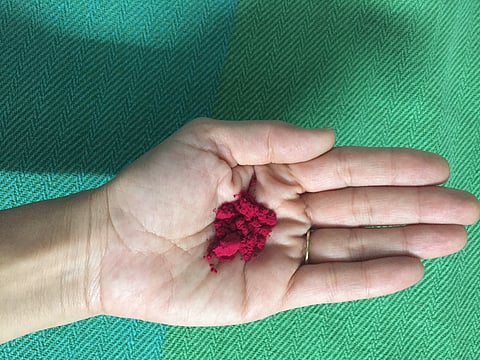

A team of researchers headed by the Indian Institute of Technology, Hyderabad (IITH) have developed solar cells using New Fuchsin (NF) dye with aqueous electrolyte and platinum-free counter electrodes and achieved a 2.9% conversion efficiency. This NF dye is water soluble, inexpensive and is commonly used to make vermilion powder (Kumkum in local dialect) in India when mixed with turmeric. Mostly it is used for social and religious purposes in the Asian nation. The NF dye in its purest form is available in Indian supermarkets for $2.00 per gram, reported Press Trust of India (PTI).
The researchers say these components are non-toxic, economical leading to the fabrication of low cost and eco-friendly 'green' solar cells.
Along with IITH, the research team comprised members from the Advanced Centre of Research in High Energy Materials (ARCHEM) Hyderabad, National Institute of Technology (NIT) Kurukshetra, and Institute of Physics at the University of São Paulo, Brazil.
The team used NF as a photosensitizer for dye sensitized solar cells (DSSC). NF sensitized solar cells were fabricated and optimized using various liquid electrolytes and carbon-based counter electrodes.
Speaking to the PTI, IITH Professor Sai Santosh Kumar Raavi from the Department of Physics explained that this technique of fabricating solar cells is different from the usual variety of silicon cells most commonly used around the world today. While silicon is expensive and needs high temperature methods for processing and eventually high carbon footprint, NF are an eco-friendly option to produce solar cells as these require little energy to manufacture.
The technology could be used for building integrated PV (BIPV) applications. "The idea of this work is not to run behind the best efficiency. Sometimes, the cost for achieving the highest efficient device overwhelms the actual motivation behind developing a particular class of solar cell technology- which is to be eco-friendly and inexpensive," PTI quoted Raavi as saying.
The research is published in Solar Energy Journal, Science Direct.
